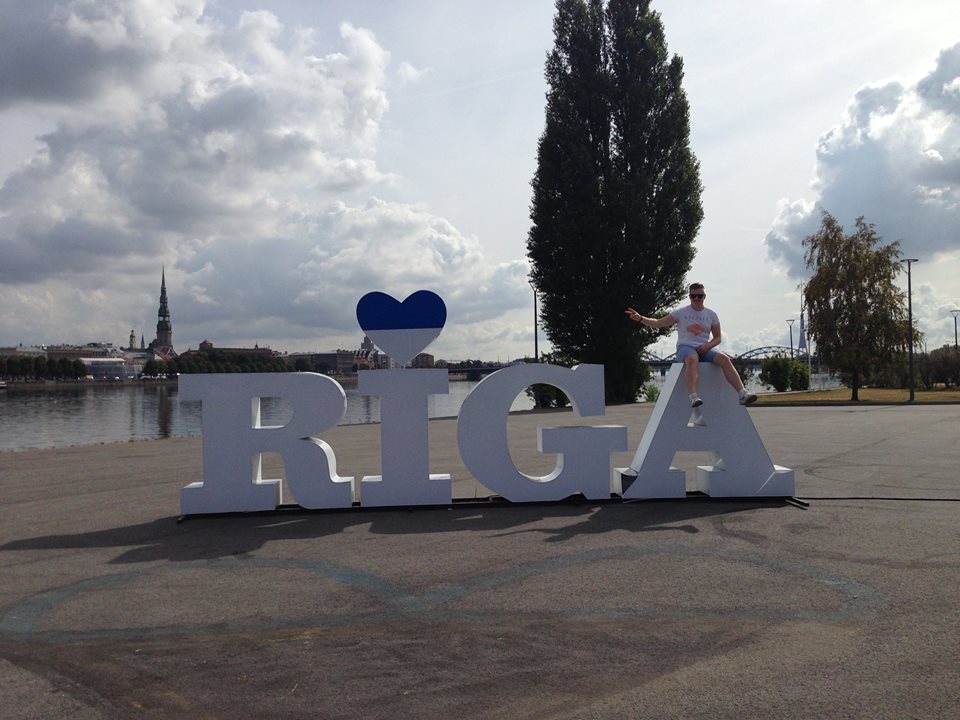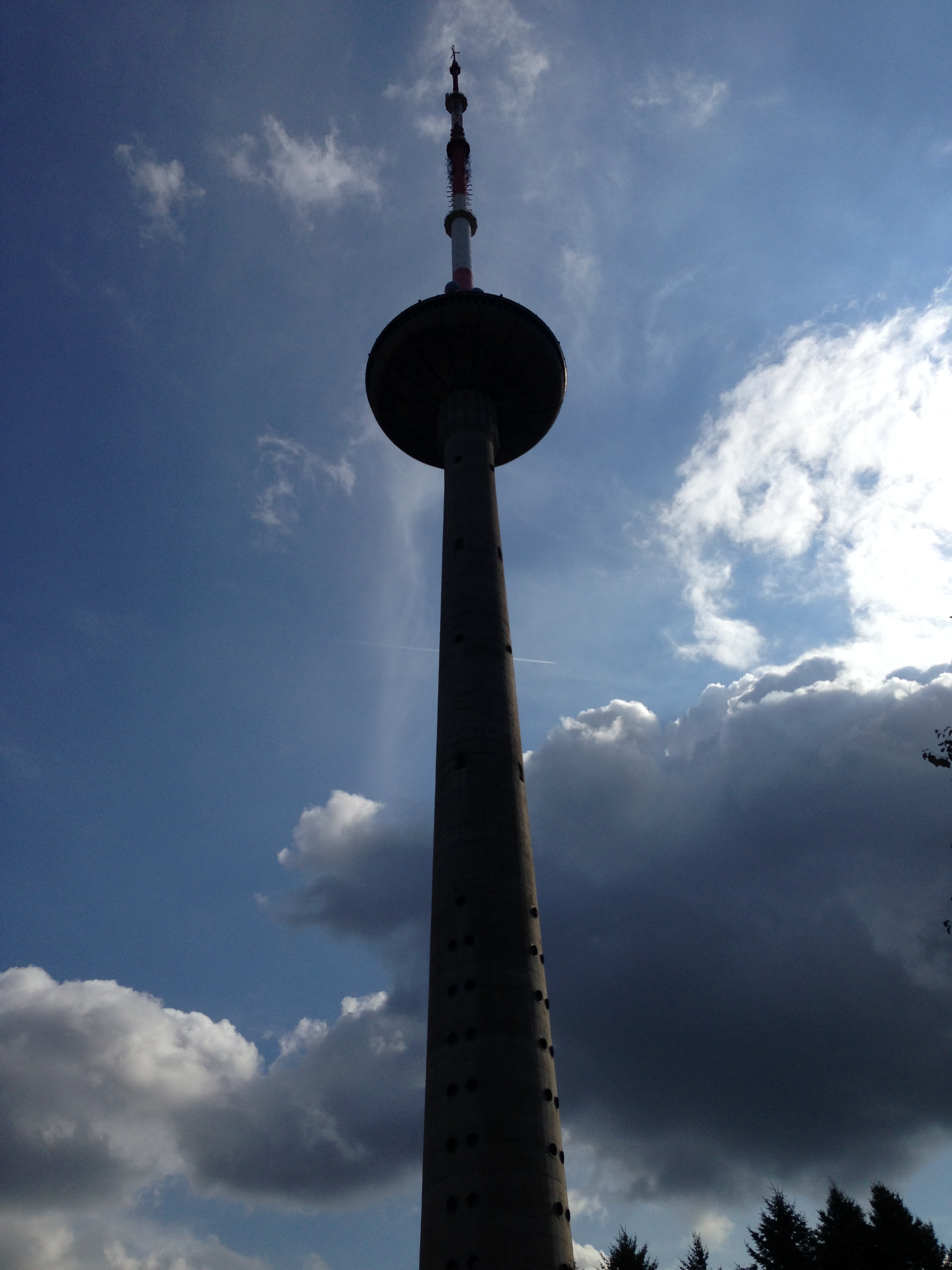Five gems of the Baltic states
/On August 23 1989, nationals from each of the three Baltic states formed a human chain in a peaceful protest for independence of the countries to be recognisedas separate entities from the Soviet Union. The 675.5 kilometre line started at the iconic Gediminas’ Tower in Vilnius, Lithuania and went north, winding through Riga, Latvia and then on to Estonia’s capital city, Tallinn.
The demonstration was done to bring global attention to the plight of the states in their fight for independence, whilst simultaneously demonstrating solidarity between them all. It also allowed protestors to highlight the illegal occupation by the Soviet Union that happened 49 years earlier and publicise the question of Baltic independence as a moral issue, as opposed to a political matter.
The route (highlighted in yellow) that approximately two million people formed on 23 August 1989.
25 years and four days after the Chain of Freedom along the Baltic Way, I was stood inside Gediminas’ Tower – now a museum and tourist attraction – learning about the event. Not only was it an interesting story, but I was also able to see the route that the people lined that day, set out on the map above.
It was a familiar sight. That’s not because I’d ever read about the Baltic Way. In fact, I had no prior knowledge of it ever happening. But it was because it showed the same route that I would be taking over the next week, or so. Although we also took a ferry to the more well-known destination of Helsinki, Finland, it was the other three countries where we came across a lot of the cool places that we ended up visiting.
So here is a list of five of the Baltic states’ must-visit ‘gems’ –places you might easily miss, but should definitely add to your travel itinerary if you ever head out there.
1) Viewing platform at St Olaf’s Church – Tallinn, Estonia
Standing, somewhat precariously, on the viewing platform at St Olaf's Church.
It’s unlikely that you’ll miss St Olaf’s Church if you’re ever in Tallinn. Formerly the tallest building on Earth, some 400 years ago, it is written into local law that no building in Tallinn can be built higher than the church.
But if you didn’t know already, it is easy to dismiss St Olav’s as merely a place of worship. Though actually, its viewing platform makes it one of the must-do attractions in the whole city. Its superb 360-degree views will be so captivating that you won’t even worry about how dodgy the walkway below, looking as though it’s been nailed on to the tin roof, looks. It is more than worth the small fee to make the ascent to the viewing platform.
Traveller tip: The long and winding staircase feels like it’s never going to end and provides little room to pass for people coming in the opposite direction. But keep following the rope, there for stabilisation purposes, and pumping your legs because at the end of it the views will be worth it.
2) Jānis Lipke Memorial – Riga, Latvia
After taking the wrong route and walking for roughly an hour to find this place, we weren’t expecting an off-track dirt road to be the destination. It isn’t well signposted, nor mentioned clearly on tourist maps, and it was only thanks to free Wi-Fi from the near Radisson Blu hotel that we even got back on track.
The approach to the Jānis Lipke Memorial made it appear as though we were about to die. The entrance, a black wooden door, sign-free, with a single buzzer sits on an otherwise residential street, obscured from the nearby River Daugava by nothing more than slightly dense foliage. As I pressed the buzzer I wasn’t even sure that this was the right place.
Then the door opened, creakily slow, to reveal a dimly lit hallway with all the indication of a European backpacker’s trip-gone-wrong horror film. Fortunately it was the right place, and there was a well-presented member of staff behind the door at the other end of the corridor providing somewhat of an anti-climax.
The Jānis Lipke Memorial is one of the most impressive museums in the whole of the Baltics. It is a reconstructed version of the shed and bunker in which Lipke – a dock worker in the local port – hid and saved more than 50 Jewish people from the Nazis. Here, you’ll find life stories of his family and people saved by Lipke, explained by the complimentary audio guide.
But this interesting and immersive commemoration to one of World War II’s unsung heroes is worth the visit as much for its educational purposes as it is to see the architecturally-sound work of award-winning Latvian architect Zaiga Gaile.
The exit is a lot nicer than the entrance at the memorial.
Traveller tip: Unless you’re getting a taxi, make sure you plan well for your walk to the memorial. You are better accessing it from Vanšu Bridge, rather than the Stone Bridge, as there is an inlet between the Stone Bridge and the road along which the Lipke Memorial is located. If you walk around it, it will add a good 30-45 minutes to your trip, and takes you on some unsafe-looking backroads.
3) The Riga Sign – Riga, Latvia
One of the benefits of getting lost on the way to the Jānis Lipke Memorial was stumbling across the Riga sign. There are two Riga signs in the city. One can be seen as you enter the city by road. This is the other one, which is across the River Daugava from the city centre.
The money shot for any Riga trip. Cross the Stone Bridge to find it.
It’s perfect for a photo op, and is similar to those seen in Amsterdam, Netherlands and Cancún, Mexico. You can stand on the sign, but be careful of a potential wet surface, and make sure not to step on the parts of the sign that have started to break.
Traveller tip: On the way back, don’t forget to take the opportunity for a photo from behind looking back over the water at Riga’s skyline as you sit on the river bank and bask in its beauty.
My girlfriend, Gab, taking advantage of Riga's beauty.
4) Vilnius TV Tower – Vilnius, Lithuania
Looking up: At its base, Vilnius TV Tower stands next to broadcasting studios for Lithuanian television.
There is no doubt about it, Vilnius TV Tower is not hidden. Not one bit. One of the most distinguishable landmarks in that area of world, it is a large, concrete reminder of the Soviet regime and the location of the events of 13 January 1991, where 14 unarmed citizens lost their lives and a further 700 were injured opposing the Soviet military seizure of the landmark.
But Lithuania’s tallest and highest structure may fall by the wayside as it is some way out of the city centre. Only practically accessible by taxi or trolleybus (if you know which one you’re taking and the stop to get off at), it may be seen as a bit too much fuss. But for the effort getting to the tower, there is reward, as the revolving café at the top allows you to see the entire surrounding area from the comfort of your own booth.
Traveller Tip: Once you get to the top in the lift, don’t come back down until you have completely finished your visit. Me and my girlfriend made the mistake of going back down in the lift to have a look at the small museum of the Vilnius massacre on the ground floor with the intention of going up to the café again for a drink later on.
Apparently, one ticket equals once ride up and one ride down in the lift, so when we tried to go up again we were shouted at by the ticket saleswoman and security guard in Lithuanian. Playing dumb and pretending we had no idea what they were on about, and with the help of a nice Lithuanian family who spoke broken English we were sharing the lift with, the TV Tower workers went off in a huff and left us to it.
5) Night kayaking on the River Daugava
A kayaking selfie taken after passing under one of the illuminated bridges in the canal system. You can buy waterproof phone carry cases to prevent you drowning and/or losing your phone.
At first I was sceptical about night kayaking in Riga, and wasn’t too enthusiastic about this suggestion by my girlfriend. As it turned out it was one of the best things we did on our travels. The feeling of kayaking (an activity in which I did most of the paddling in our two-person transport, might I add) on an international shopping lane is pretty surreal, but is a boost to the adrenaline and gives you a unique perspective from which to view the city.
You also enter the Riga’s canal system, with an informative tour guide stopping off every so often to feed you anecdotes about the city and its landmarks, as well as to partake in some beady-eyed beaver spotting.
Traveller tip: Book in advance for this trip (http://www.toursinriga.lv/?r=3). There is no up-front fee, and the overall cost of €25 for the evening is great value for the experience you get. Simply fill in the form, and you should soon receive confirmation of your booking via email.
Do it yourself
You can fly return with Ryanair to Vilnius (from £73.98), Tallinn (from £77.98) and Riga (from £65.98) from London Stanstead next summer. Tallinn (specific dates and prices yet to be announced) and Riga (from £51.98) are also reachable from Manchester, whilst you can fly from Liverpool to Vilnius and back (from £65.98).
Another option is to fly to one city and come back from another, using Lux Express coaches (usually no more than €20 one way) to travel in between.





















I recently read that Estonia is the poorest country in the Eurozone, but after visiting Tallinn, I found that it is one of the world’s richest nations.